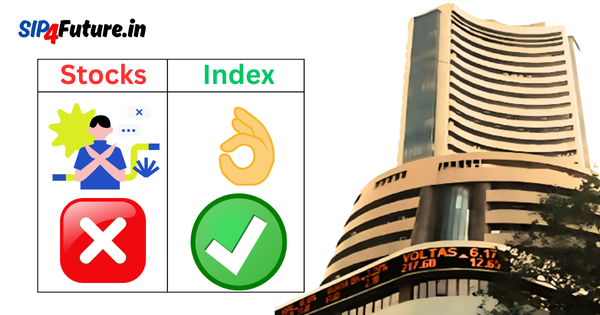Archean Chemical Industries Limited (ACI), a prominent player in India’s chemical sector, recently unveiled its Q4 FY25 financial results, sparking discussions among investors and analysts. Listed on the National Stock Exchange (NSE) at ₹604.65 as of May 5, 2025, with a decline of 3.61%, the company reported a net profit of ₹583 million, reflecting a marginal year-on-year (YoY) dip but a quarter-on-quarter (QoQ) gain. Alongside, ACI announced a final dividend of ₹1.50 per share, signaling confidence in its financial health. This article delves into ACI’s performance, the factors influencing its stock, and the broader market dynamics shaping its trajectory, while integrating real-time data and external insights.
What Drives Archean Chemical’s Financial Performance?
Archean Chemical Industries, a leading exporter of bromine and industrial salt, operates in a niche segment of the chemical industry. The company’s Q4 FY25 results, released on May 2, 2025, highlight both resilience and challenges. Revenue for the quarter reached ₹3.2 billion, marking a 13.07% YoY increase from ₹2.83 billion, driven by higher volumes in bromine derivatives and industrial salt. However, net profit slightly declined to ₹583 million from ₹596 million YoY, primarily due to lower other income, which dropped to ₹7.8 crore from ₹11.96 crore YoY. On a QoQ basis, profit rose from ₹563 million, reflecting operational improvements.
The company’s EBITDA stood at ₹896 million, up 3.7% QoQ, though margins contracted to 27.84% from 31.09% YoY due to rising input costs. Posts on X, such as those from @gaze_observer, noted a 21.7% YoY revenue growth to ₹345.57 crore and a 12.38% QoQ profit increase, underscoring ACI’s ability to navigate market volatility. The National Stock Exchange provides real-time stock data, confirming ACI’s market cap at approximately ₹7,454.41 crore, aligning with investor sentiment shared on social platforms.
Key Financial Highlights
| Metric | Q4 FY25 | Q4 FY24 | YoY Change | Q3 FY25 | QoQ Change |
|---|---|---|---|---|---|
| Revenue (₹ billion) | 3.20 | 2.83 | +13.07% | 3.04 | +5.3% |
| Net Profit (₹ million) | 583 | 596 | -2.2% | 563 | +3.6% |
| EBITDA (₹ million) | 896 | 881 | +1.7% | 864 | +3.7% |
| EBITDA Margin (%) | 27.84 | 31.09 | -4.25% | – | – |
ACI’s strategic focus on expanding bromine derivative volumes and optimizing salt production has bolstered its topline. However, global supply chain disruptions and fluctuating raw material prices pose ongoing challenges, as noted in industry reports on
How Does the Dividend Announcement Impact Investors?
On May 3, 2025, ACI’s board approved a final dividend of ₹1.50 per share (150%), following an earlier ₹1.50 dividend for Q1 FY25, as reported by @marketalertsz on X. This move reinforces ACI’s shareholder-friendly approach, especially amid a volatile market. The dividend, subject to shareholder approval at the Annual General Meeting (AGM), translates to a yield of approximately 0.5% at the current stock price of ₹604.65. For context, the Bombay Stock Exchange lists ACI’s dividend history, showing consistent payouts in recent years, enhancing investor confidence.
The dividend announcement comes at a time when other NSE-listed firms, such as Reliance Industries (₹5.50/share) and Tata Tech (₹11.7/share), also declared dividends, reflecting a broader trend of rewarding shareholders during the Q4 FY25 earnings season. ACI’s payout, though modest, signals financial stability, particularly for income-focused investors. However, the stock’s 3.61% decline on May 5 suggests market caution, possibly due to profit-taking or broader sectoral pressures.
What Role Does the Chemical Sector Play in ACI’s Stock Performance?
The chemical industry, a critical component of India’s manufacturing ecosystem, is influenced by domestic demand, export markets, and government policies. ACI’s focus on specialty chemicals like bromine and industrial salt positions it in a high-growth segment, with applications in pharmaceuticals, agriculture, and industrial processes. According to the Department of Chemicals and Petrochemicals, India’s chemical exports grew by 8% in FY25, driven by demand from Europe and Asia. ACI, as India’s largest bromine exporter, benefits from this trend, as highlighted in a 2023 X post by @cakunalshah1983.
However, the sector faces headwinds from rising energy costs and geopolitical tensions affecting global trade. The Russia-Ukraine conflict, for instance, has disrupted fertilizer supply chains, indirectly impacting demand for industrial chemicals. ACI’s stock price, which surged 11.39% to ₹464.9 on February 20, 2025, as per Business Standard, reflects periodic investor optimism, but the recent 3.61% drop indicates sensitivity to global market cues.
Sectoral Influences on ACI
| Factor | Impact on ACI Stock |
|---|---|
| Global Demand | Positive: Strong export markets boost revenue. |
| Energy Costs | Negative: Higher input costs compress margins. |
| Government Policies | Neutral: PLI scheme supports growth, but compliance costs rise. |
| Geopolitical Risks | Negative: Supply chain disruptions affect pricing. |
How Do Government Decisions Shape ACI’s Market Outlook?
Government initiatives, such as the Production Linked Incentive (PLI) scheme for chemicals, have spurred investment in the sector. The Ministry of Commerce reports that the PLI scheme aims to attract ₹1.5 lakh crore in investments by 2027, benefiting companies like ACI. Tax incentives and export promotion policies have also supported ACI’s bromine and salt exports, contributing to its 39% revenue CAGR projected by ICICI Securities through FY27.
Conversely, environmental regulations pose challenges. The Central Pollution Control Board has tightened norms for chemical manufacturers, increasing compliance costs. ACI’s salt production, reliant on coastal facilities, faces scrutiny over brine disposal, potentially impacting operational expenses. Investors monitoring ACI’s stock on note that regulatory risks could offset some of the PLI-driven upside.
When Does the Global Market Scenario Affect ACI’s Trading Conditions?
The global chemical market, valued at $4.7 trillion in 2024 per industry reports, is navigating a complex landscape. Weak macroeconomic conditions, as noted by Reliance Industries’ chairman Mukesh Ambani in a Financial Express report, have pressured chemical prices. China’s economic slowdown has reduced demand for industrial chemicals, while Europe’s energy crisis has inflated production costs, indirectly affecting ACI’s export margins.
On May 5, 2025, the NSE Nifty 50 gained 300 points, driven by Reliance Industries’ 1% uptick, as per NDTV Profit. However, ACI’s 3.61% decline suggests stock-specific factors, such as profit booking post-earnings or sectoral rotation. The Sensex’s resilience, up 2% in March 2025, indicates a recovering Indian market, but FII outflows and crude price volatility remain concerns, as outlined in The Economic Times.
Global Market Influences
| Factor | Impact on ACI |
|---|---|
| China’s Demand Slowdown | Negative: Lower export demand. |
| Europe’s Energy Crisis | Negative: Higher input costs. |
| US Market Recovery | Positive: Potential demand growth. |
| Crude Price Volatility | Negative: Impacts raw material costs. |
What Are the Key Takeaways from ACI’s Earnings Call?
ACI has scheduled an earnings call for May 7, 2025, at 11:00 AM IST, as announced on TipRanks. The call will discuss Q4 and full-year FY25 results, offering insights into management’s outlook. Analysts expect updates on capacity expansion, particularly in bromine derivatives, and strategies to mitigate input cost pressures. The company’s debt-free status, highlighted in a 2023 X post by @cakunalshah1983, positions it well to fund growth initiatives without leveraging its balance sheet.
Investors can access the call details via ACI’s investor relations page on their official website. Past calls have emphasized ACI’s focus on sustainability and export-led growth, aligning with India’s “Make in India” initiative. The Ministry of External Affairs notes that chemical exports are a priority under India’s trade agreements, potentially benefiting ACI’s long-term prospects.
How Does ACI Compare to Industry Peers?
ACI’s performance can be benchmarked against peers like Tata Chemicals and Deepak Nitrite, both NSE-listed chemical majors. Tata Chemicals reported a 10% YoY revenue growth in Q4 FY25, while Deepak Nitrite’s profit grew 15%, driven by specialty chemicals demand. ACI’s 13.07% revenue growth is competitive, but its profit dip contrasts with peers’ stronger bottom-line gains. Data from BSE India shows ACI’s price-to-earnings (P/E) ratio at approximately 20x, lower than Deepak Nitrite’s 25x, suggesting relative undervaluation.
Peer Comparison
| Company | Q4 FY25 Revenue Growth | Q4 FY25 Profit Growth | P/E Ratio |
|---|---|---|---|
| Archean Chemical | 13.07% | -2.2% | 20x |
| Tata Chemicals | 10% | 5% | 22x |
| Deepak Nitrite | 12% | 15% | 25x |
What Are the Future Targets and Historical Returns for ACI?
Analysts remain optimistic about ACI’s growth trajectory. ICICI Securities, as reported on The Economic Times, maintains a “Buy” rating with a target price of ₹675, implying a 12% upside from ₹604.65. The brokerage projects a 39% revenue CAGR to ₹20 billion by FY27, driven by bromine and salt volume growth. Other research firms, per
, suggest targets ranging from ₹650 to ₹700, citing ACI’s export strength and debt-free balance sheet.
Historically, ACI’s stock has delivered robust returns. From its IPO price of ₹407 in November 2022, the stock has gained nearly 49% by May 2025. In 2024, it touched a 52-week high of ₹720, per NSE data, reflecting strong investor interest. However, volatility persists, with a 52-week low of ₹450 in early 2025, as noted on
Analyst Targets and Historical Performance
| Source | Target Price (₹) | Upside (%) | Historical Returns (Since IPO) |
|---|---|---|---|
| ICICI Securities | 675 | 12% | 49% (Nov 2022–May 2025) |
| Consensus (Moneycontrol) | 650–700 | 8–16% | – |
Archean Chemical Industries stands at a pivotal juncture, balancing strong revenue growth and a shareholder-friendly dividend policy against sectoral and global challenges. Its Q4 FY25 results demonstrate operational resilience, while the ₹1.50 dividend reinforces investor trust. Government policies, such as the PLI scheme, and robust export demand provide tailwinds, but rising input costs and regulatory pressures warrant caution. With analyst targets pointing to upside potential, ACI remains a compelling pick for long-term investors, provided they account for market volatility.
Disclaimer: This article is provided for educational purposes only and does not constitute financial advice. Investing in stocks involves risks, and past performance is not indicative of future results. Readers should conduct their own research or consult a financial advisor before making investment decisions.




